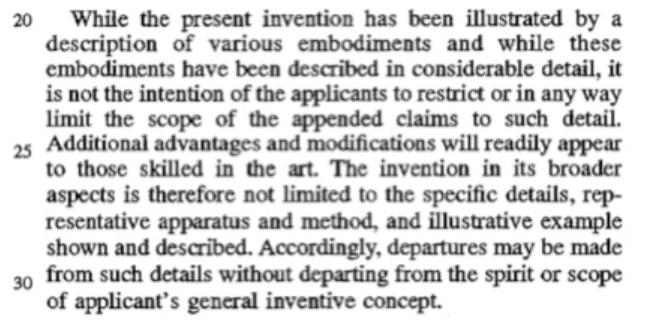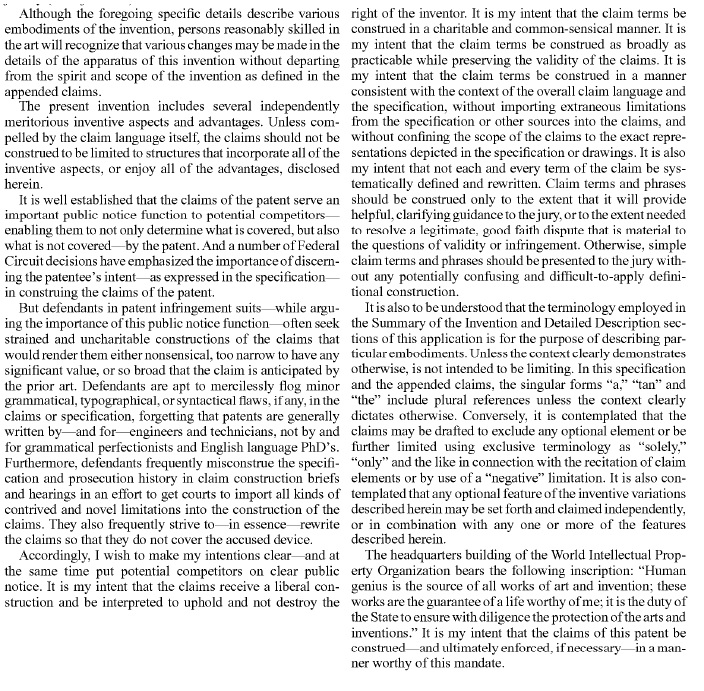Stock language for advertisements and syndicated columns were cast or stamped in more durable materials such as steel for distribution and local printing. Apparently from their resemblance to the steel plates used in the construction of boilers, the plates, and eventually the stock material on them, became known as boilerplate. Eventually usage of the term “boilerplate” was applied to stock language in any document, such as contracts, and even in patents. Boilerplate sentences and paragraphs are common in patents, but does it ever really make a difference?
Boilerplate can indeed make a difference, and thus it probably is good practice to include it in patent applications. For example in Hill-Rom Services, Inc. v. Stryker Corporation, —F.3d — (Fed. Cir. 2014), the Federal Circuit cited boilerplate language (although not identifying it as such) that the “description of various embodiments” is not intended “to restrict or in any way limit the scope of the appended claims to such detail” in determining that the tem “data link” was not limited to the particular wired data link described in the specification.
In Northrup Grumman Corp. v. Intel Corp., 325 F.2d 1346 (Fed. Cir. 2003), the Federal Circuit rejected the district court findings and defendant’s argument that Northrup was relying upon mere boiler plate that “the present invention may be made to conform to any one of a variety of data transfer algorithms.” However the Federal Circuit did not express any opinion about boilerplate generally, but did find that the patent does not rest upon a mere “boilerplate” suggestion of broad application. It goes on to provide substantive, albeit general, support for that declared intention.
Everyone seems to have a different take on disclaimers from simple matter-of-fact statements, to expositions on claim construction philosophy:
U.S. Patent No. 8,047,178.
The bottom line is that patent application boiler plate doesn’t seem to cause any harm, and occasionally, it has been helpful. Better, of course, would be the oxymoronic “custom boilerplate” where stock broadening statements are tailored to the current disclosure. Therefore, there is good reason to include well-thought-out “boilerplate” in an application, although it is no substitute for a well-crafted specification.


